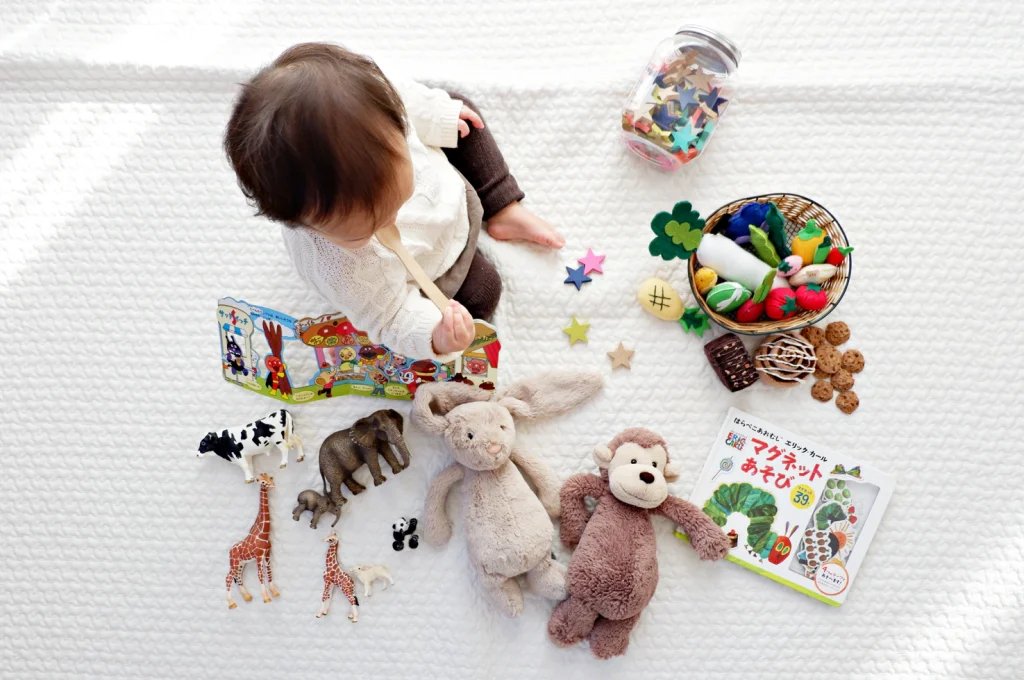We have not yet met such parents who would not like to show off the success of their children. Knowing that your baby is the best at something is a very sweet feeling! Perhaps, early English lessons and baby swimming are far from being close in spirit to everyone, but any mother can certainly tell about the importance of developing fine motor skills in a child.
From how well a small person owns his hands, his speech and development in general directly depend. One is closely related to the other. Very often we do not even realize that a child’s usual game is actually a simulator for his fingers. And when we realize, we begin to encourage such games by all means. Some mothers give their children containers of buckwheat and pasta, others play patties and “magpie-crow”, others buy the right toys.
We have prepared for you a convenient checklist of toys for the development of fine motor skills in children of different ages. But please don’t give too much importance to the notes about childhood. Maybe your child will understand the puzzles for three-year-olds already at the age of one. Or, on the contrary, at the age of four, “baby” entertainment will be liked. Both are perfectly normal!
Toys to help in the development of fine motor skills
Children from the age of three are already considered quite smart, so it is quite possible to give them toys with small details. And this opens up great scope for a fundamentally new level of games and the development of fine motor skills. A 3-year-old can pick up (rather than mouth) beads, building blocks, and traditional drawing tools.
Small constructors
One day there comes a point when Lego Duplo starts to lose its appeal little by little, it becomes too simple. It’s time to move on to a more complex classic constructor with small details like brio train sets. Playing with it will allow the child to reach a new level of fine motor skills, because much more precise movements are required here.
Tools and materials for creativity
At this age, it is already possible to teach a child to hold a pencil, brush and scissors correctly. Cutting and drawing are the perfect ways to develop fine motor skills and experience the joy of the act of creating. To make your child more fun, buy him a children’s easel and a good art kit with handy tools. It is not necessary to purchase a “Neva” watercolor, although remember that the difference between cheap dull and bright high-quality paints is always noticeable even to an inexperienced artist. Developing task books also delight many children.
Magnetic sets
Multi-colored details of the magnetic designer can be molded on a refrigerator, a wall covered with magnetic paint or on a specially attached board. They turn on the imagination, encourage role play, and provide an opportunity to engage (and develop) fine motor skills.
Bodyboards
Children love bodyboards, this is an absolute hit with little people aged from one to three. And sometimes those who are older are not averse to moving the heck and opening the doors. The main charm of such a toy is that it is as safe as possible (all parts are securely attached to the base), but at the same time it gives the child a sense of belonging to a “real” adult life! You can make a business board yourself by buying a board, screws and various chains with sockets in a hardware store, or you can find it ready-made. Including children, they are very good at compact bizicubes.
Large puzzles
It is better to start with large puzzles consisting of 1-2 pieces, then gradually move on to 4, 9 or 12. As with the sorter, this game has a lot of work for a small brain. Do not be surprised if the child quickly moves from simple puzzles with a small amount of details to rather small and complex ones. But do not be discouraged if he does not appreciate such fun at all. We are all different.
Board games
There are a number of games designed to develop fine motor skills in a child. Some of them are based on the principles of balance – you need to add details to them or, conversely, remove them (“turrets”). Other board games require careful alignment of pieces on a flat table surface (simple dominoes) or manual dexterity (such as “fishing”).
Laces
A game for the patient and diligent. It requires manual dexterity, concentration, and the ability to bring the matter to the end. On the other hand, it is also a simulator for these qualities. As in the case of puzzles, it is better to start with simple laces, moving on to more complex ones with small details.
Kinetic sand
Multi-colored kinetic sand is as good as dough or plasticine: it gives a lot of tactile sensations and leaves room for imagination. You can hide various small toys in it, build castles out of it or just crush it in your hands – any kind of game will benefit.
You may also like
-
Common Misconceptions About Disability Law and Lawyers
-
Finding the Right Disability Lawyer: Key Factors to Consider
-
Creating Families Across Canada: The Journey Through Adoption
-
Understanding the Practical Applications of Ibutamoren in Research
-
Navigating Regulations and Permits in the Crude Oil Hauling Industry
